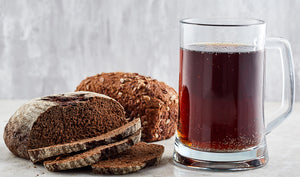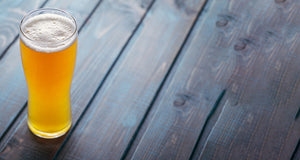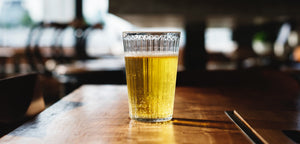The Art of Brewing Hazy Beers
There is no doubt that hazy IPAs are currently one of the most popular beers. At first, brewing a beer that was not clear seemed just lazy. But hazy brewing has now turned into a delicate art. It is not just as simple as packaging your beer with yeast still in suspension, there are many different methods of adding haze to a beer.
Use lots of adjuncts
Most brewers know that malted grains produce sugars for the yeast to munch on, but they also add proteins to the mix. Protein molecules are much larger than anything else in beer, so having a lot of protein leads to a much more opaque finished product. Most base malts don't contain a lot of protein. So adding larger percentages of adjuncts (such as wheat and oats) can help add to the haze because of their high protein content. Think about wheat beers: they are most often brewed with 100% wheat, which makes the beer hazy and adds a smooth mouthfeel. Combine this with dank, fruity hops and a low flocculating yeast, and you are on the way to the haze craze.
Use a low flocculating yeast strain
Most yeasts fall out of suspension when there are no more sugars to ferment. That process is called flocculation. When a yeast cleans up and settles to the bottom of the fermenter very fast after fermentation, that specific yeast is highly flocculant. On the other end of the spectrum, when a yeast likes to stay suspended in the beer, you guessed it...it is a low flocculant yeast!
All yeast will flocculate at some point, so that is why it is best to drink hazy beers fresh. Drinking them fresh also assures you don't lose that fresh, juicy hop flavour and aroma. Most yeasts specifically made for NEIPAs will also produce a fruity flavour called esters which add to the fruit forward flavour of the beer.
Late addition hops
Whirlpool hopping (sometimes referred to as a hop stand) or dry hopping are both techniques where hops are added after the boil. Hops contain bittering compounds and oils that contribute flavour and aroma. Late addition hopping reduces the amount of isomerization, which leads to less bitterness and more flavour and aroma. This means that you can add an absolutely ridiculously absurd amount of hops without making it so bitter that it is unpalatable. Another effect that these hopping techniques have on the beer is HAZE! This happens because of the hop compounds are not dissolved into the beer as much as they would if they were added during the boil. The haze is from small hop particles left in suspension.
Other tips
When mashing, it can help to stir your mash every 10 minutes or so to disturb the grain bed. When you mash, most of the proteins will get filtered out through the grains and husks. Disrupting the mash can help prevent these proteins from getting filtered in the grain bed. Another technique is to cut your boil time in half. This will also help the protein stay in suspension and prevent it from breaking down.



